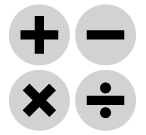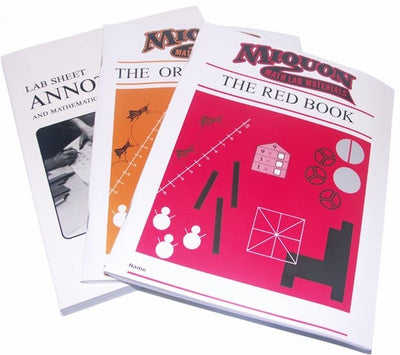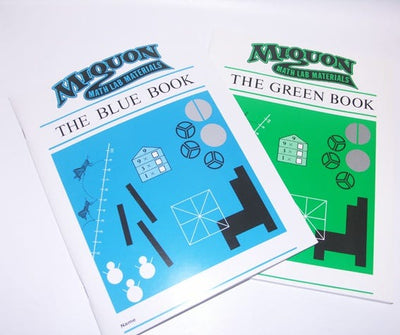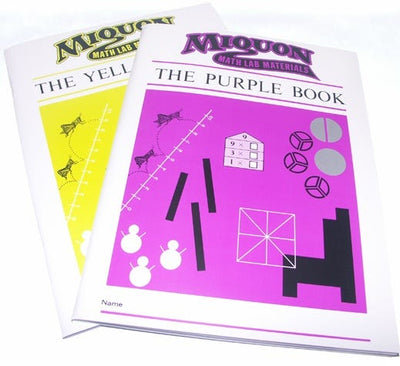Miquon Math
Homeschool Math Curriculum
Miquon Math is one of the best tools to teach younger students how to think mathematically. Miquon teaches all four arithmetic operations (addition, subtraction, multiplication and division) beginning the first year, and even introduces algebraic notation, geometry, and diagram-reading in the first book.
The program emphasizes mathematical patterns and relationships rather than pre-set formulas and methods. It uses Cuisenaire® Rods* and a unique graphic layout to help children discover mathematical patterns and relationships with just a bit of guidance from their teachers as necessary.
Parents often choose Miquon as a fun supplement, though some use it as the main math program in the early elementary years. These homeschool math books cover all the standard subjects and more. When students finish the last book in the series, most students are well-prepared for the 4th- or 5th year books in other programs.
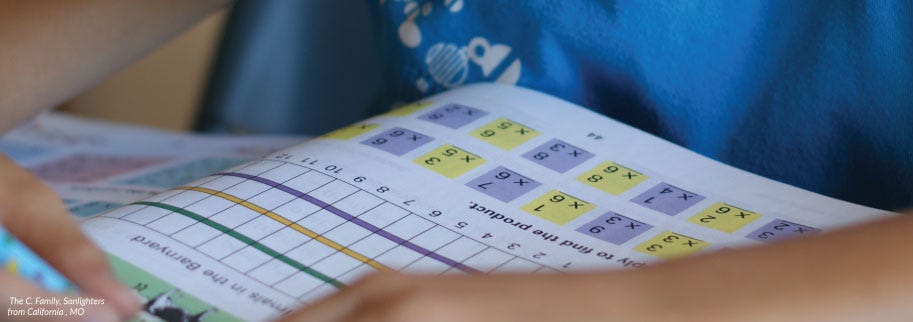
MIQUON MATH
Shop By Program
Browse all Miquon Math programs, from first grade through fourth grade.
MIQUON MATH
Learn More
Learn more about Miquon Math, the advantages and disadvantages of the program, and what makes it unique.
Miquon Math Programs
Shop All Miquon Math Products
Miquon Math Scope-and-Sequence Chart
Used with permission of the publisher. All rights reserved.
The lab sheets in the Miquon Math Materials workbooks cover 26 topics listed below. Each lab sheet is identified with a code printed in its lower-right hand corner. This code indicates the grade level, the topic, and the position of the lab sheet within its topic.
| Section | Topic | First Grade Level 1 Orange Book |
First Grade Level 2 Red Book |
Second Grade Level 3 Blue Book |
Second Grade Level 4 Green Book |
Third Grade Level 5 Yellow Book |
Third Grade Level 6 Purple Book |
|---|---|---|---|---|---|---|---|
| A | Counting | A1-A24 | -- | -- | -- | -- | -- |
| B | Odd-Even | -- | B1-B12 | B13-B20 | -- | -- | -- |
| C | Addition | C1-C11 | C12-C25 | C26-C44 | C35-C36 | C37-C46 | -- |
| D | Subtraction | D1-D4 | D5-D12 | D13-D16 | D17-D18 | D19-D22 | D23-D44 |
| E | Addition and Subtraction | E1-E25 | E26-E41 | E42-E49 | E50-E53 | E54-E57 | -- |
| F | Multiplication | F1-F12 | F13-F22 | F23-F42 | F43-F46 | F47-F50 | F51-F56 |
| G | Addition, Subtraction, and Multiplication | G1-G8 | G9-G12 | G13-G20 | -- | -- | -- |
| H | Fractions | H1-H6 | H7-H24 | H25-H42 | -- | H43-H56 | H57-H64 |
| I | Addition, Subtraction, Multiplication, and Fractions | -- | I1-I8 | I9-I16 | -- | -- | -- |
| J | Division | -- | J1-J12 | -- | J13-J18 | J19-J26 | J27-J32 |
| K | Addition, Subtraction, Multiplication, Fractions, and Division | -- | K1-K8 | K9-K16 | -- | K17-K22 | -- |
| L | Equalities and Inequalities | L1-L4 | L5-L10 | L11-L16 | L17-L20 | L21-L24 | -- |
| M | Place Value | -- | -- | -- | M1-M16 | -- | M21-M24 |
| N | Number Lines and Functions | N1-N4 | -- | -- | N5-N10 | N11-N18 | -- |
| O | Factoring | -- | O1-O4 | -- | O5-O6 | O7-O12 | -- |
| P | Squaring | -- | -- | -- | -- | P1-P6 | P7-P18 |
| Q | Simultaneous Equations | -- | -- | -- | -- | Q1-Q8 | -- |
| R | Graphing Equations | -- | -- | -- | -- | -- | R1-R30 |
| S | Geometric Recognition | S1-S4 | -- | S5-S8 | -- | S9-S11 | -- |
| T | Length, Area, and Volume | T1-T8 | -- | -- | T9-T20 | T21-T28 | -- |
| U | Series and Progressions | -- | -- | U1-U6 | -- | U7-U12 | -- |
| V | Grid and Arrow Games | -- | -- | V1-V6 | -- | V7-V8 | V9-V10 |
| W | Mapping | -- | -- | W1-W12 | -- | -- | -- |
| X | Clock Arithmetic | X1-X10 | -- | -- | X11-X14 | X15-X16 | X17-X18 |
| Y | Sets | -- | -- | -- | -- | Y1-Y10 | -- |
| Z | Word Problems | -- | -- | -- | -- | Z1-Z13 | Z1-Z13 |
*Cuisenaire Rods are rectangular plastic rods that vary from one unit (a cube) to ten units in length. Each length comes in a specific color (the one-unit length is always white; the two-unit length, red; etc.). By manipulating the Rods, children are able to "see," in a neutral, physical form, what happens on the theoretical level when they add, subtract, multiply and divide. For instance, if we place the red rod (2) and the purple rod (4) end-to-end, we find they are equal in length to the dark green rod (6): we SEE that 2+4=6.
